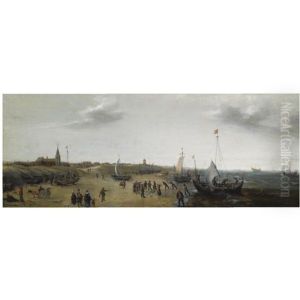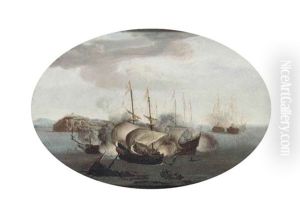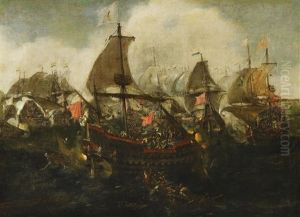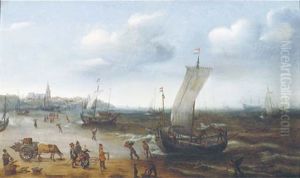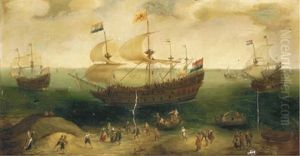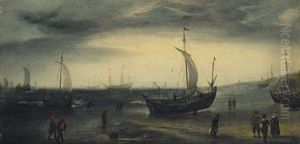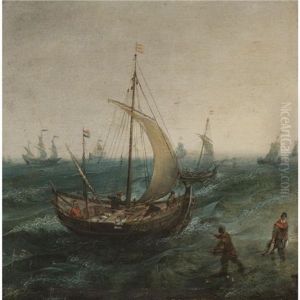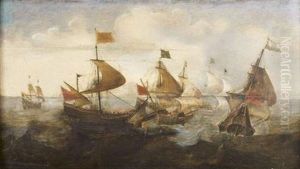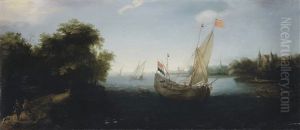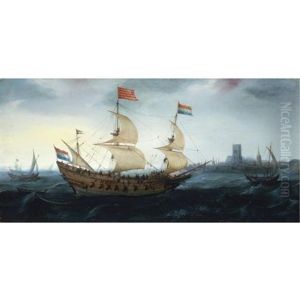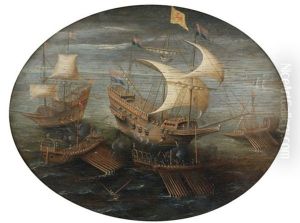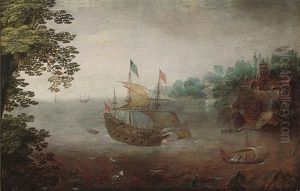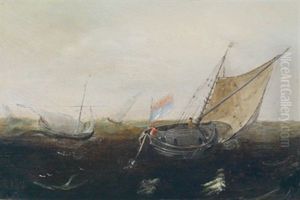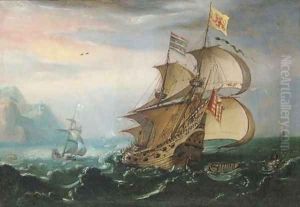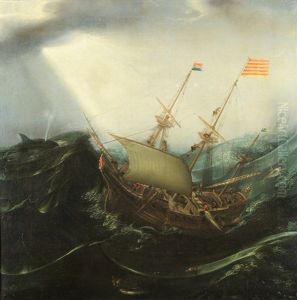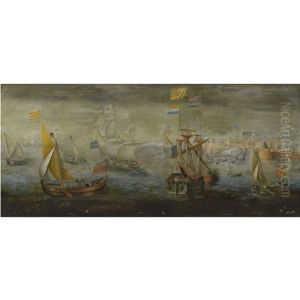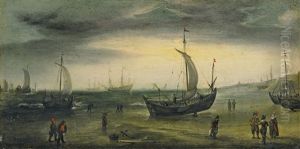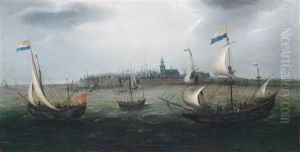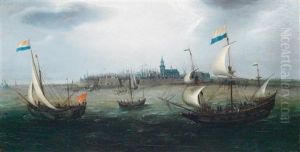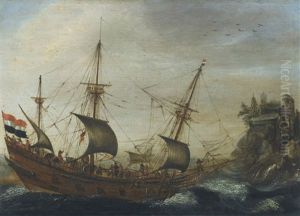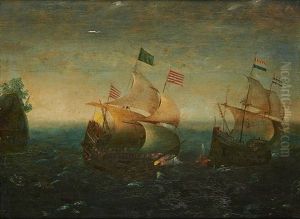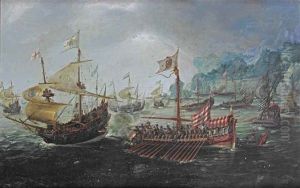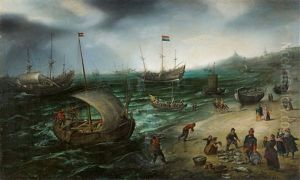Hendrik Cornelisz. Vroom Paintings
Hendrik Cornelisz. Vroom was a pioneering Dutch Golden Age painter who is often recognized as the founder of Dutch marine art, a genre that would become highly significant in Dutch painting given the country's maritime dominance in the 17th century. Born in Haarlem in 1566, Vroom's early life and artistic training are not thoroughly documented, but it is known that he traveled extensively, which greatly influenced his artistic development.
Vroom's travels took him to Spain and Italy in his youth, where he was exposed to the work of various artists and the Mediterranean sea, which would later become a central subject in his paintings. He is believed to have worked in the studio of the Italian marine painter Paul Bril in Rome. After returning to the Netherlands, Vroom continued to travel, visiting Lisbon and the Azores, among other places. His experiences at sea and the observations of naval operations informed his detailed representations of ships and sea battles.
By the end of the 16th century, Vroom had settled in Haarlem and began receiving commissions. One of his most significant commissions was for a series of tapestries depicting the defeat of the Spanish Armada, which were to be displayed in the English House of Lords. Although the original tapestries were destroyed in a fire in 1834, Vroom's preliminary sketches and drawings have survived, offering insight into his working process and the grandeur of the intended project.
Vroom's oeuvre primarily consists of maritime scenes, battles, and harbor views that reflect both his technical skill and his firsthand knowledge of seafaring. His work is characterized by a keen attention to detail, particularly in the rendering of ships and their rigging, as well as the use of aerial perspective to create depth in his seascapes. He also demonstrated a strong grasp of the effects of light on water, which adds a sense of realism to his paintings.
Hendrik Cornelisz. Vroom passed away in 1640 in Haarlem. His legacy continued through his sons, who also became painters, and through the influence he exerted on the next generation of Dutch marine artists, including Jan Porcellis and Simon de Vlieger, who helped to further the prominence of the genre in Dutch art. Vroom's works can be found in various museum collections, attesting to his lasting impact on the history of Dutch painting.
